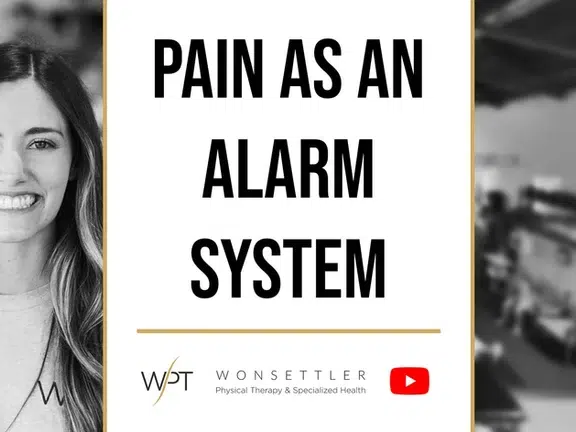As patients attending physical therapy, many of us are struggling with pain. Pain is actually a normal part of the human experience of living, however living every day with pain is NOT normal! If you are currently living every day in pain, then this story can help you to understand why.
I want you to imagine you are walking along, then you step on a rusty nail that punctures your foot. How do you know (without looking) that there is a nail in your foot? Let’s consider this, our body actually possesses the most unique alarm system in the world, our nervous system. The nervous system houses 45 miles of nerves within it, that’s pretty amazing!
When we step on the nail, the alarm (nervous system) is activated. A message fires from the foot into the nerves to the spinal cord and finally to the brain. What would your next steps be after stepping on the nail? Likely you would have the nail removed, the wound would be cleaned, bandaged then a tetanus shot would be administered. After we remove the nail, does the pain go away right away? No, of course not! Our alarm system wants to ensure that we are okay, so the pain decreases overtime!
If you are struggling with chronic pain, what happens to make the pain levels remain present even after healing occurs with time? We know that after an injury, 1 in 4 people will have the alarm system remain triggered moving into ‘high alert mode’. This high alert mode leaves the body more sensitive to stress including movement, activities, emotional stressors and even temperature. Tasks or movements that previously may not have activated the alarm system now do, and we experience pain with previously benign movements.
A question commonly asked is, ‘Why did my alarm system stay elevated in high alert mode?’. The answer is many things contribute to forming this elevated state including traumatic experiences upon initial injury such as a car accident or a slip on ice. Other things like financial strain, relationship issues, troubles at work and fear for the future can lead to the elevated alarm system. The good news is, there are techniques that can be done to restore the sensitivity of the nervous system. If this is something you are struggling with, reach out to your trusted physical therapist at WPT!
References:
Louw A, Zimney K, O’Hotto C, Hilton S. The clinical application of teaching people about pain. Physiotherapy Theory and Practice. Jul 2016;32(5):385-395.
Louw A, Puentedura E, Zimney K, Cox T, Rico D. The Clinical Implementation of Pain Neuroscience Education: A Survey Study. Physiotherapy Theory and Practice. 2017 – accepted for publication.

